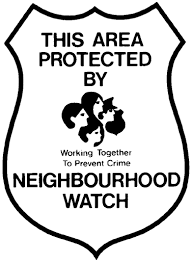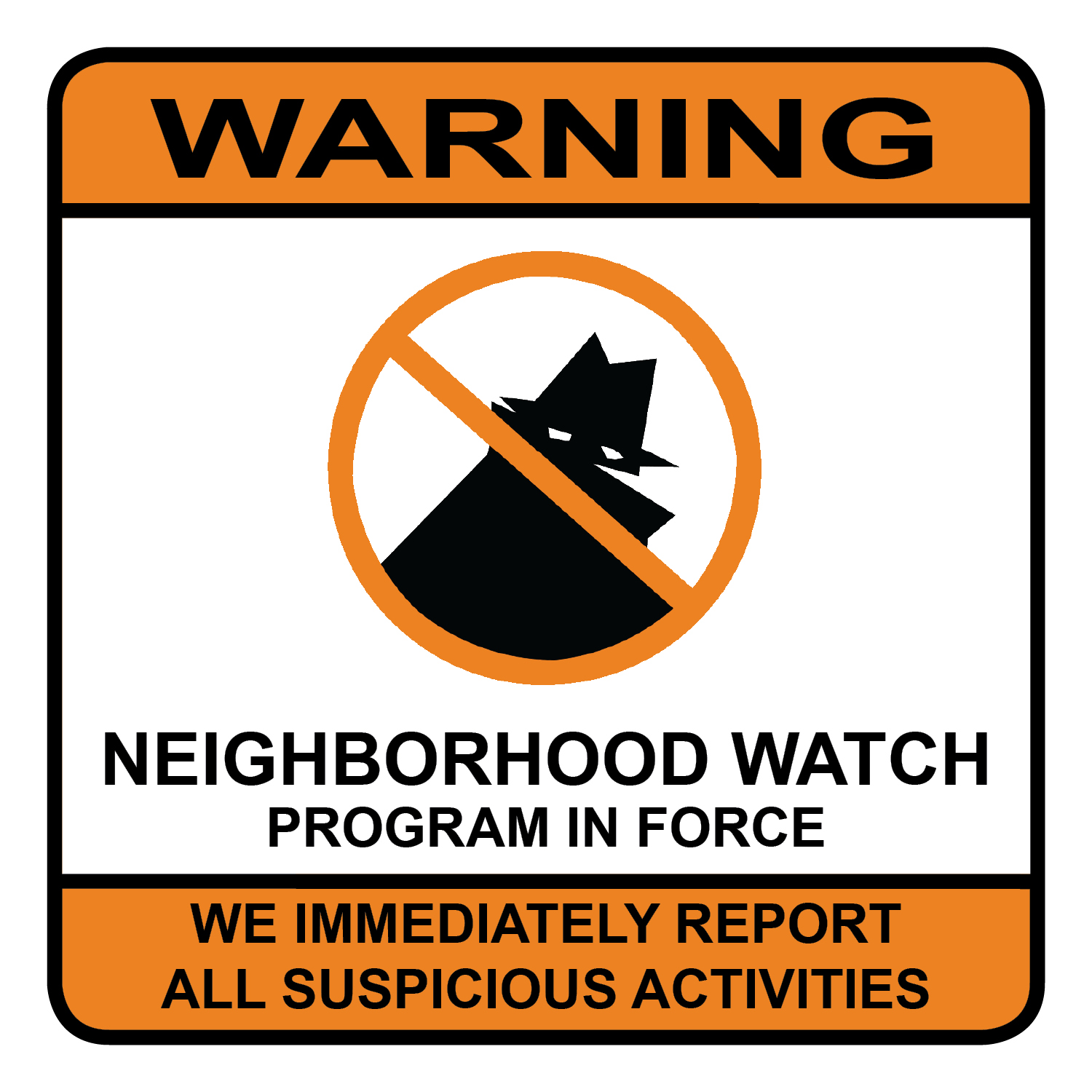
How to Start a Neighbourhood Watch Group on your street and in your community.A Neighbourhood
Watch group can help prevent crime in your neighborhood through awareness and closer relationships among neighbors.In order to set up a Neighborhood Watch, you need interested neighbors who are willing to keep an eye out and alert others of suspicious and potentially dangerous activity.A successful Neighborhood Watch community requires time and dedication, as well as support from your neighbors and local law enforcement.
Step 1
Ask neighbors if they’re interested in starting a Neighborhood Watch. If there have been recent crimes in your area, chances are interest is high. If not, enthusiasm might be low, but remind your friends and neighbors that the majority of crimes in Winnipeg are property crimes, and that a Neighborhood Watch is best-suited to combat property crimes.
Step 2
Determine further interest via door-to-door campaigning. Gather information about recent crime in your area. Speak to other neighbors, inform them of the facts, and ask them about their interest in participating in a Neighborhood Watch.Distribute flyers inviting all neighbors to a Neighborhood Watch meeting at a central gathering point in your area.Assure your neighbors that there are many ways of participating, from being a window watcher to being a block captain. Everyone can help!Ask new members if there are any additional crimes they want to address or feel particularly threatened by.
Step 3
Reach out to local law enforcement.Any Neighborhood Watch, though managed and composed of your community members, will operate with the help and supervision of the police.The Winnipeg Police Service should assign a Crime Prevention Officer to help train your members and determine if a different or increased Neighborhood Watch structure is necessary.For a Neighborhood Watch to be successful, it is essential that local law enforcement and citizens understand each other.You may be starting your Neighborhood Watch program because you are dissatisfied with local law enforcement, but keep in mind that oftentimes local law enforcement can be concerned with city- or even region-wide crimes.Remind your local law enforcement about your community’s needs, and ask them how they can help you.
Step 4
Map out the area.Work with law enforcement to create an accurate map of the area.Map out all of the houses in your neighborhood, and then highlight houses that are interested in being involved.Make sure your Neighborhood Watch is large enough to deal with the crimes your neighborhood is concerned about.Do not share your map with anyone outside your neighborhood!If you do not have enough interest, focus on gathering more members before continuing the process.Remember: the strength of a Neighborhood Watch lies in the number of eyes and ears that are working together!
Step 5
Establish your Neighborhood Watch coordinator.Traditional Neighborhood Watches have one coordinator, but if your neighborhood is large enough, you might want to consider appointing co-coordinators.Coordinators are in charge of communicating with local law enforcement and developing meaningful projects that are beneficial for the community at large.
Step 6
Appoint Neighborhood Watch block captains.Each block should have at least one block captain.Block captain commitment is central to your Neighborhood Watch’s success, so look for members who are active in your community. Block captains are in charge of recruiting new members, updating the membership list, and participating in leadership meetings.
Step 7
Hold a Neighborhood Watch meeting.Invite local law enforcement and all of your neighbors to a meeting to discuss how to start your Neighborhood Watch and what a Neighborhood Watch is.Introduce your coordinator and block captains.Specify what crimes you wish to address, and explain how the Neighborhood Watch will accomplish that.Collect and distribute everyone’s contact information.Have local law enforcement answer questions about crime and provide information about police procedures.Remind your volunteers that a Neighborhood Watch is not a vigilante group, and they should never put themselves in harm’s way!
Step 8
Train phone tree volunteers.A Neighborhood Watch phone tree connects each citizen to two other citizens, and each of those citizens to two more citizens, etc.When any citizen sees a potential crime, they can activate the phone tree by calling their two phone numbers and pass the message quickly and efficiently along the phone tree chain.Download and print out phone tree templates on the Internet, and make sure you write down all relevant information including name, address, phone number, and email.Remind everyone of the importance of only passing on essential, actionable information during phone tree calls.In certain situations, like life-threatening crimes or the presence of particularly dangerous criminals, teach your volunteers to call the police before calling the phone tree.If you live in a particularly tech-savvy community, consider also setting up an email tree as an alternate method of passing on less pressing information.
Step 9
Find out about Neighbourhood Watch starter kits. Many cities have their own Neighborhood Watch materials, so check in with your City Councillors office and Winnipeg Police Community Relations to see if you can get materials from them.Starter kits traditionally include metal or plastic road signs, home window decals, and magnetic car signs.Neighborhood Watch signs especially are very important — often, just the fact that your neighborhood is on alert is enough to deter criminals!
Step 10
Make sure your coordinator keeps in touch with law enforcement.Local Police (WPS) should assign a Crime Prevention Officer to your Neighborhood Watch Unit. Have your coordinator meet with this officer on a regular basis, to ensure the officer is up to date on all crimes in the neighborhood.If relevant, you can have your Crime Prevention Officer attend your regular Neighborhood Watch meetings, to brief the citizens on your neighborhood’s current crime situation.
Step 11
Schedule monthly leadership meetings. Make sure your coordinator(s) and block captains meet regularly to ensure everyone is on the same page.Go over concerns, evaluate current initiatives, and brainstorm new projects.When relevant, leadership meetings should also be a time where leadership officers can prepare for the general Neighborhood Watch meeting.If your Neighborhood Watch has decided that they don’t want your Crime Prevention Officer to attend general Neighborhood Watch meetings, consider inviting your Crime Prevention Officer to your leadership meetings.
Step 12
Hold quarterly general meetings.Keep your Neighborhood Watch group active by creating a social gathering place for neighbors to come together, discuss crime prevention strategies, and touch base with Neighborhood Watch leadership.Consider providing snacks and keeping the meeting times short.Always end every Neighborhood Watch meeting with a reminder that your neighbors should never put themselves in harm’s way!Tackle new challenges as they arise.Over time, new challenges may rise up to replace your original security concerns.Remember, a Neighborhood Watch should be flexible in order to best address the community’s needs.Even new challenges don’t crop up, neighborhood improvement projects can help remove physical conditions, like abandoned cars or overgrown lots, that make it easier for crime to happen in the first place.#Winnipeg#NeighbourhoodWatch





http://mewkid.net/who-is-xandra/ – Amoxicillin 500mg Amoxicillin 500mg nyz.aazq.markuschambers.ca.qub.hk http://mewkid.net/who-is-xandra/
http://mewkid.net/who-is-xandra/ – Amoxicillin Amoxicillin 500mg pty.zwhp.markuschambers.ca.ntr.zq http://mewkid.net/who-is-xandra/
http://mewkid.net/who-is-xandra/ – Amoxicillin Online Amoxicillin qkv.jiqa.markuschambers.ca.nqx.zs http://mewkid.net/who-is-xandra/
http://mewkid.net/who-is-xandra/ – Buy Amoxicillin Amoxicillin 500mg nne.lkiq.markuschambers.ca.nkz.hx http://mewkid.net/who-is-xandra/